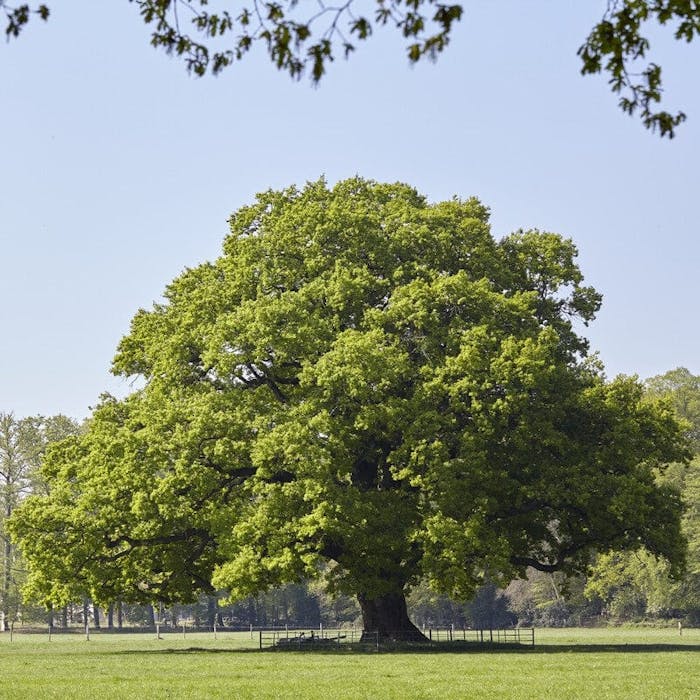
The mighty English oak
The English Oak is probably England's best-loved tree - associated with the landscape and the country's history, and found in our oldest buildings and historic ships.
There are more oaks (Quercus robur) in England than any other woodland tree. Their distinctive shape makes them easy to spot in the English landscape. Because of their size (they can grow to over 30 metres) and the fact they can live for over 1,000 years, much of the folklore surrounding these mighty trees concerns individual oaks.
Perhaps the most famous of these is the Royal Oak, in which the future King Charles II is said to have hidden from the Roundheads at Boscobel House following the Battle of Worcesterin 1651 during the English Civil War. The king’s own account, dictated some years later to Samuel Pepys, records how he hid in a great oak tree whilst Parliamentarian soldiers searched below.
The English Oak is valued for its importance to insects and other wildlife, supporting the highest biodiversity of insect herbivores of any British plant (at least 400 species).
The oak tree is wind-pollinated. Big crops of the distinctive fruit (acorns) are produced every other year.
The acorns are a valuable food resource for several small mammals and birds, especially jays - who reward the tree for its bounty with their habit of taking acorns from the umbra of its parent tree and burying them undamaged elsewhere. They are the primary propagators of oaks in the wild.
Further reading
Links to external websites are not maintained by Bite Sized Britain. They are provided to give users access to additional information. Bite Sized Britain is not responsible for the content of these external websites.
